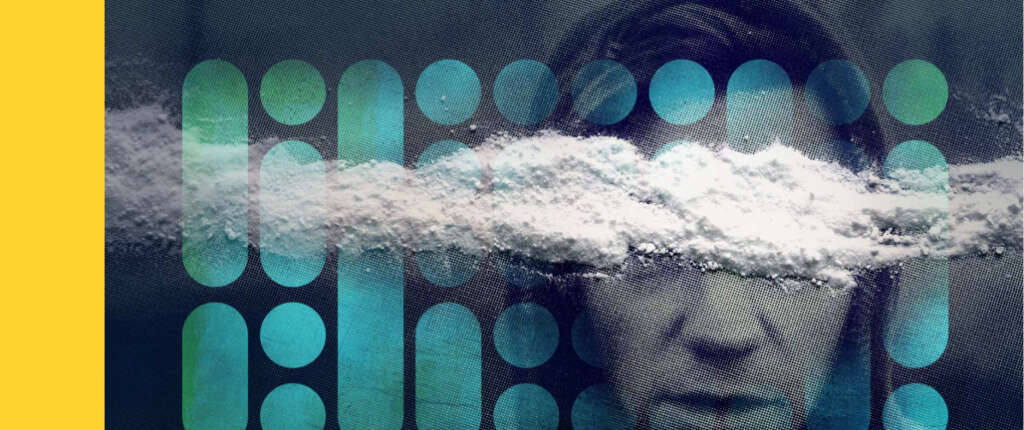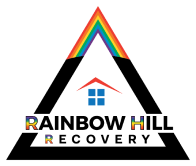Rainbow Hill Recovery Treats Substance Use Disorder
A lot of times, substances have been used to feel less socially anxious, to avoid or engage with emotional states, to feel less lonely, to cope with fear, or to self-medicate for any number of mental stressors. When substances have been used to a degree that functioning in major areas of our lives (e.g. relationships, work, school) have been lost, making the decision to recover from substances is a wise and compassionate choice.This program recognizes that recovery from substance use disorder is intended to restore functioning
Signs of Substance Use Disorders
- Cravings: Intense desires or urges to use the substance.
- Loss of Control: Using more of the substance or using it for longer periods than intended.
- Tolerance: Needing larger amounts of the substance to achieve the same effects.
- Withdrawal: Experiencing physical or psychological symptoms when the substance is not used.
- Neglect of Responsibilities: Failing to meet work, school, or home obligations due to substance use.
- Continued Use Despite Problems: Persisting in use despite knowing it causes or worsens physical, mental, or social issues.
- Social and Interpersonal Problems: Experiencing conflicts or problems in relationships due to substance use.
Causes and Risk
Factors
- Genetics: Family history of substance use disorders can increase susceptibility.
- Environment: Exposure to substance use in the family or community can contribute to risk.
- Psychological Factors: Co-occurring mental health conditions like depression, anxiety, or trauma.
- Developmental Factors: Early exposure to substances or trauma can be a risk factor.
- Social Influences: Peer pressure, social norms, and stress.
What we treat
What we
don’t treat
Withdrawal Symptoms
Active, untreated psychosis
Alcohol use disorder (AUD)

Alcohol use disorder (AUD) is a chronic condition characterized by an inability to control or stop alcohol consumption despite its negative impact on one’s life. It involves a pattern of alcohol use that leads to significant impairment or distress.
Cannabis use disorder (CUD)

Cannabis use disorder (CUD) is a condition characterized by a problematic pattern of cannabis (marijuana) use that leads to significant impairment or distress. While cannabis is often used recreationally and is legal in many places, some individuals develop issues with its use that can affect various aspects of their lives.
Hallucinogen-related disorders

Hallucinogen-related disorders arise from the use of substances that alter perception, mood, and cognitive processes, often leading to experiences of hallucinations or distorted reality. These disorders can have a profound impact on an individual’s mental health and daily life.
Common hallucinogens include:
- LSD (Lysergic Acid Diethylamide)
- Psilocybin (Magic Mushrooms)
- Peyote (Mescaline)
- DMT (Dimethyltryptamine)
- PCP (Phencyclidine)
- MDMA (Ecstasy), though primarily classified as an empathogen
Inhalant Related Disorders

Inhalant-related disorders result from the use of substances that are inhaled to produce euphoria or altered states of consciousness. These substances are often readily available in household products and can lead to significant health issues and addiction.
Common inhalants include:
- Solvents: Such as paint thinners, nail polish removers, and gasoline.
- Gases: Such as nitrous oxide (found in whipped cream dispensers), butane, and propane.
- Aerosols: Such as spray paints, deodorants, and air fresheners.
- Nitrites: Often found in products like amyl nitrite, commonly used as “poppers” for their psychoactive effects
Opioid Use Disorders

Opioid use disorder is a medical condition characterized by a problematic pattern of opioid use that leads to significant impairment or distress. Opiates and opioids are narcotics. Narcotics are a class of drugs that are chemicals — natural or synthetic — that interact with nerve cells and have the potential to reduce pain.
Some examples of prescription opioids and opiates include:
- Oxycodone
- Oxymorphone
- Morphine
- Codeine
- Fentanyl
Sedative, hypnotic, or anxiolytic-related disorders

Sedative, hypnotic, or anxiolytic-related disorders involve problematic use or dependence on medications that depress the central nervous system. These substances are commonly prescribed for anxiety, sleep disorders, or other conditions, but misuse or dependence can lead to significant health issues.
Sedatives: Medications that slow down brain activity to help reduce anxiety or agitation. Examples include barbiturates and benzodiazepines.
Hypnotics: Drugs used to induce or maintain sleep. Examples include certain benzodiazepines and non-benzodiazepine sleep aids like zolpidem.
Anxiolytics: Medications prescribed to alleviate anxiety. Commonly include benzodiazepines like diazepam, lorazepam, and alprazolam
Stimulants Use Disorders (like crystal meth and cocaine)

Stimulant use disorder (SUD) refers to a problematic pattern of using stimulant substances that leads to significant impairment or distress. Stimulants can include both prescription medications used to treat conditions like attention deficit hyperactivity disorder (ADHD) and illicit drugs that affect the central nervous system.
Some examples of stimulants include:
- Prescription Stimulants:
- Amphetamines: Adderall, Dexedrine
- Methylphenidate: Ritalin, Concerta
- Illicit Stimulants:
- Cocaine:
- Methamphetamine
- Ecstasy (MDMA)
- Synthetic Cathinones (Bath Salts)
